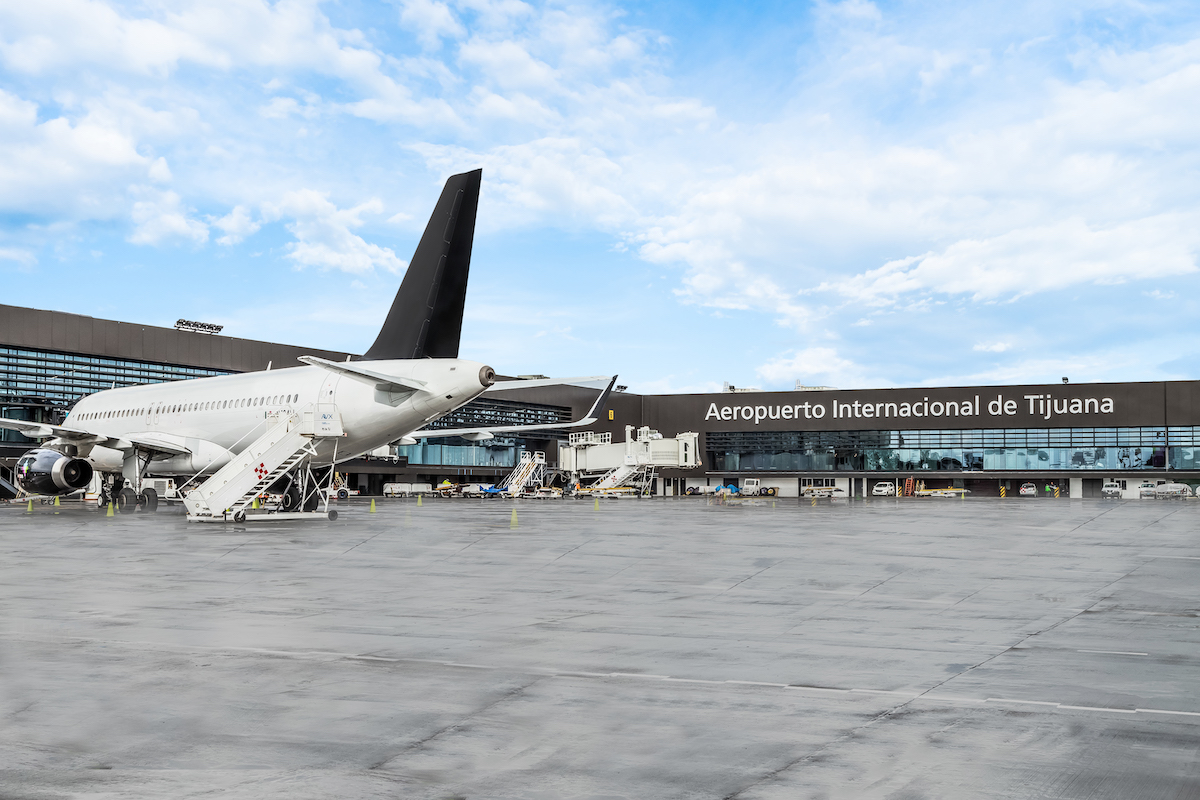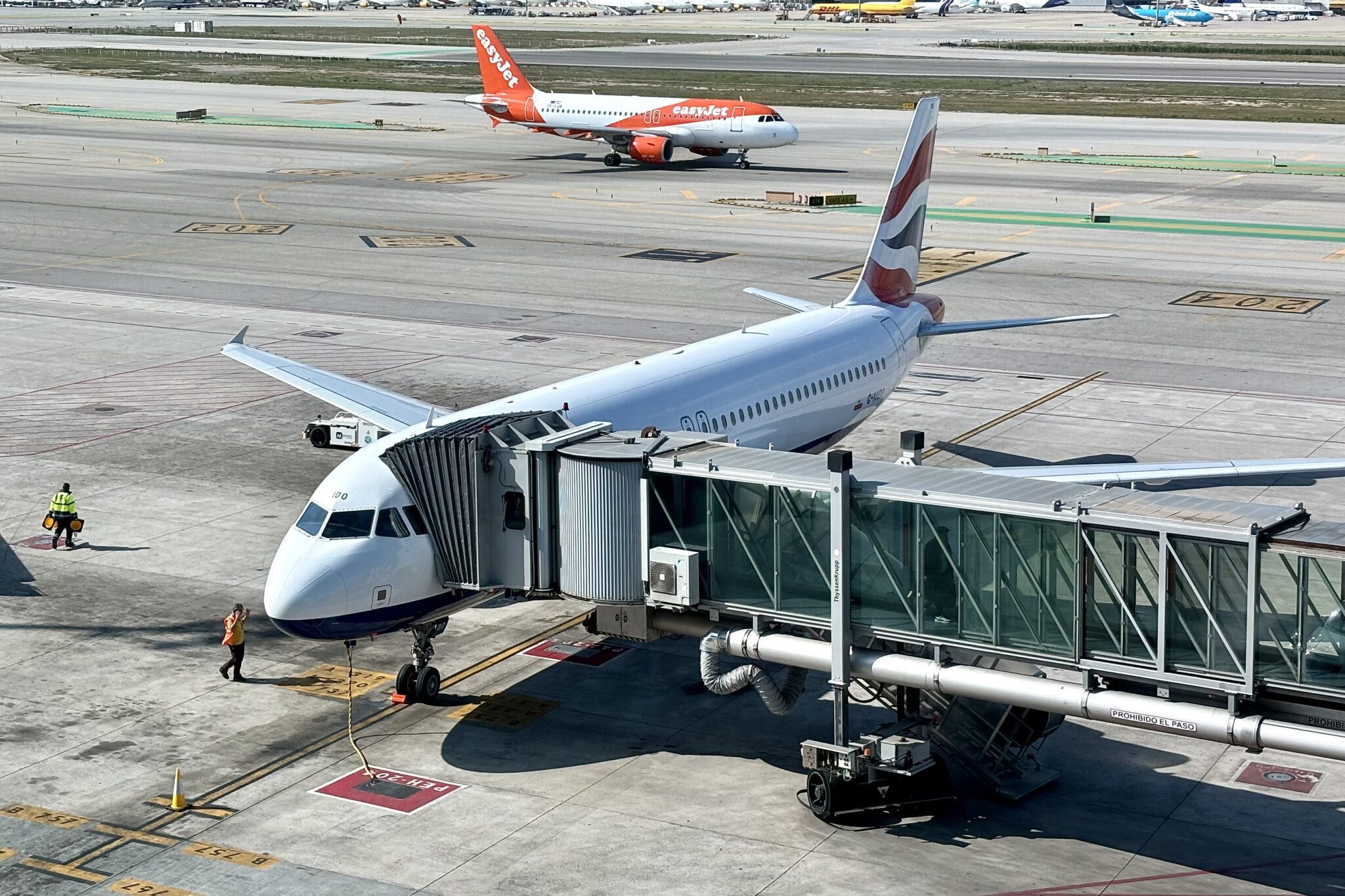Drive down San Diego’s Otay Mesa Freeway and suburban development gives way to a landscape of warehouses and logistics centers along the U.S.-Mexico border. But in the middle of this anywhere-and-nowhere landscape sits a stucco terminal building with a busy curbside, full parking lots, and all the trappings of a contemporary airport. This is Cross Border Xpress.
Opened in late 2015, Cross Border Xpress is the only international bridge on the U.S. border that caters solely to air travelers. It has transformed the Tijuana Airport from a mid-sized Mexican facility into one of the country’s busier gateways if one takes into account the number of Americans using the bridge to fly to and from the airport. From 2015 to 2021, passenger numbers at Tijuana nearly doubled to 9.7 million from 4.9 million, according to data from airport operator Grupo Aeroportuario del Pacifico (GAP).
The pandemic has only accelerated the changes to California-Mexico travel driven by Cross Border Xpress. In 2019, U.S. Bureau of Transportation Statistics data show 1.6 million people entered the U.S. via the bridge, while only 150,760 people entered at the San Diego airport after flights from Mexico. That split appears to have only widened with Cross Border Xpress entries up nearly 28 percent compared to 2019 during the first seven months of the year, while U.S.-Mexico airline seat capacity at the San Diego airport was down 34 percent, Diio by Cirium and the latest BTS data show.
Cross Border Xpress is “really transforming the way of traveling from Southern California to Mexico,” GAP CEO Raul Revuelta Musalem said.
On routes to Mexican beaches popular with U.S. travelers, like Cancun, Los Cabos, and Puerto Vallarta, Alaska Airlines seats from San Diego are down 6 percent year-over-three-years and Southwest Airlines seats are down 88 percent, which includes the suspension of Puerto Vallarta flights, according to Diio. Conversely, Volaris seats from Tijuana to those same markets have nearly doubled, and those on Viva Aerobus are up more than 1,000 percent. The latter’s growth from Tijuana to Mexican beaches has been remarkable: the discounter flew a fifth of the seats that Alaska did from San Diego in 2019 but now flies roughly 2.5-times the number offered by the U.S. carrier.
This shift is transforming the Tijuana airport. GAP opened a new processor building this summer that allows arriving international passengers, for example from Asia, to transit through Tijuana to the bridge and the U.S. without clearing Mexican customs. The operator hopes the new facility will help the airport land new international flights, for example to Asia and Central America, said Revuelta.
Tijuana had nonstop flights to Beijing and Shanghai, as well as Guatemala City and San Salvador, in the years just before the pandemic, Diio schedules show. San Diego had a nonstop to only Tokyo. So far, only the San Diego-Tokyo flights have resumed.
Tijuana is not the only airport in GAP’s portfolio undergoing significant growth. The operator, which manages 12 airports in western Mexico plus the Kingston and Montego Bay airports in Jamaica, is seeing strong growth across its business. In fact, during the pandemic, GAP surpassed the operator of Mexico City’s airport as the busiest airport operator in the country.
GAP’s busiest facility is the Guadalajara airport, which serves Mexico’s third most populous region. Work is underway there on a second runway and new terminal that will double its passenger capacity by 2026, Revuelta said.
“Guadalajara really has a great opportunity to be the second biggest hub in Mexico after Mexico City,” he said citing, for example, Aeromexico‘s new nonstop flight to Madrid that began at the end of last year. The airport also lacks the capacity constraints that are hampering operations at Mexico City’s main airport, Benito Juárez. Nor does Guadalajara have the fragmented market that airlines face in the capital where Mexico City’s two reliever airports, at new Felipe Angeles and Toluca, are miles — and who knows how many hours in traffic — away from the main international facility.
Given Guadalajara’s own growth, Revuelta does not expect Tijuana to surpass it as the busiest airport in GAP’s portfolio anytime soon. Both facilities are expected to continue growing at a “great pace,” he said. From January through August, Guadalajara handled 9.9 million passengers compared to Tijuana’s 8.1 million, GAP data show.
“We see promise for increasing our 98 daily flights from Guadalajara and our 95 daily flights from Tijuana, markets with metro populations of 5.3 million and 2 million, respectively,” Volaris Executive Vice President of Airline Commercial and Operations Holger Blankenstein said in July. The airline is, by a wide margin, the largest at both airports.
Despite all the optimism, Revuelta’s job is not all easy. International arriving passenger screening capacity at many of GAP’s airports, including in popular beach destinations like Los Cabos and Puerto Vallarta, was “challenged” during the summer months, he said. He attributed this to airlines flying larger planes and limited customs staffing. In addition, flight delays and other issues at the congested Benito Juarez airport in Mexico City ripples out and affects operations at GAP’s airports, he added.
“I expect for the winter, everything will be more normal,” Revuelta said. And that’s a good thing to hear as GAP’s 12 Mexican airports are scheduled to handle 23 percent more seats in the fourth quarter than they did in 2019, according to Diio.
And at Tijuana, where Cross Border Xpress now has that added processing capacity for U.S. travelers, seats will be up 41 percent compared to 2019 in the December quarter. San Diego airport, just across the border and up the Otay Mesa Freeway and Interstate 5, will still be down 2 percent from pre-pandemic numbers.





